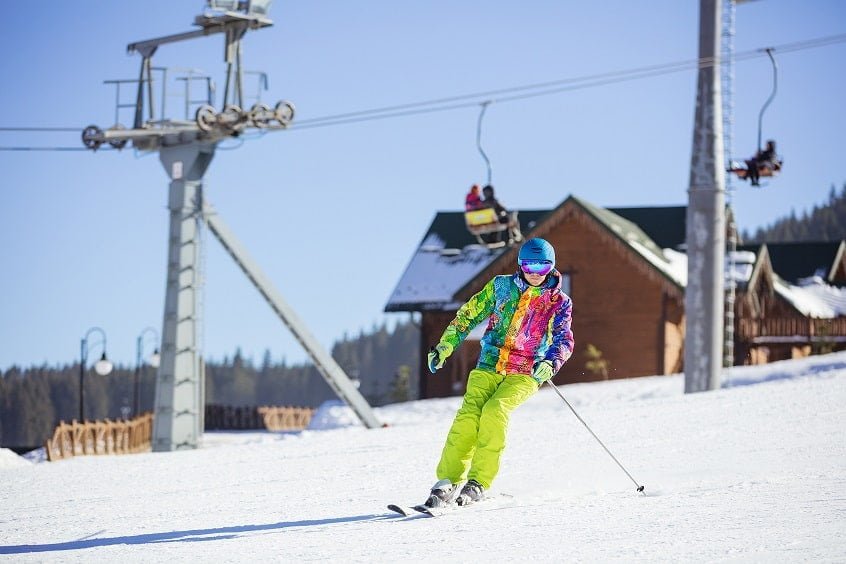
Make This Christmas Pain-Free: 10% Off on Supportive Wear!
Holidays are coming, which means that let’s welcome them with joy, laughter, and, of course, some comfort! At 360 Relief,

Winter sports can be hard on the joints. Whether you take a fall on hard ground, slip or skid while turning or are simply more susceptible to the cold, the seasonal conditions can play havoc with the body. Knees in particular are vulnerable to damage. Injuries to the anterior cruciate ligament and medial collateral ligament are two of the most common. Both have the potential to end a sporting career or seriously curtail a much-loved hobby. It is vital to wear the right kind of knee support and to take care of knees while training, playing and competing.
Table of Contents
ToggleThe good news is that there is much that can be done to prevent knee injuries. If the worst does happen, there are also several knee injury support devices to aid recovery. Compression knee supports help relieve pressure on kneecaps and give weakened joints better stability. This helps stop further injury from happening or the knee mending in the wrong position.
Good compression knee supports are anti-slip, absorb sweet well and are comfortable and easy to wear. Knee braces help with pain relief and injury recovery, covering the whole kneecap and more of the leg above and below the joint. They are usually adjustable for a close, comfortable fit. Finally, knee straps fit just around the kneecap to allow for maximum mobility while still providing essential knee support.
Here is some more specialist knee support advice for three popular winter sports: football, rugby and skiing.
Many football players experience nagging pains or twinges in their knees. These can often be precursors to more serious damage and should never be ignored. Football can place a large strain on the knees, due to the movements required and amount of running and kicking that takes place. Knee sprains happen when ligaments are stretched, torn or overused. Always seek medical advice. Most minor sprains can be treated with rest, ice packs and knee support in the first instance.

Watch out, too, for patellofemoral pain, also known as ‘runner’s knee’. This presents as pain at the front of the knee that gets worse during exercise. It can be caused by weakened thigh muscles, displacement of the kneecap or general overuse. Again, ice, rest and knee injury support can help you take care of knees during football training and matches. Another potential injury is torn cartilage, which happens when a sharp twist or turn on the pitch doesn’t go to plan. This can cause swelling, stiffness and pain and can sometimes be helped with a knee support, but may well require surgery in more serious cases.
Many rugby related knee injuries are similar to those experienced by footballers. These include damage to the anterior cruciate ligament and medial collateral ligament. Such injuries can be helped with the right kind of Rugby knee support, as well as a comprehensive examination by a medical joint specialist, ice and rest. Cartilage damage is also common, due to the twists and turns and scrum movements that are required of the players.

Another rugby knee injury that is often seen is a meniscal tear. The meniscus is a cushioning disc around the kneecap that protects the joint against stress as you walk. It can be torn or damaged by being twisted or by the impact felt when a foot is placed down on the ground too heavily. As well as tears, small pieces can become dislodged and trapped in the space where the knee moves. This will require surgery to correct. Follow all rehabilitation instructions to return safely to training when ready.
Finally, winter just isn’t winter for many without the annual skiing trip. Both skiing and snowboarding carry an increased risk of injuries, especially to the knees as they take on much of the physical impact of both winter sports. Around one-third of all skiing and snowboarding injuries involve the knees. Once again, the anterior cruciate ligament and medial collateral ligament are often affected, with tearing, damage and swelling all causing pain, swelling and other adverse symptoms.

The type of ligament tear that can happen depends partly on the position in which you move your skis. A medial collateral ligament injury is more likely with the skis pointing inwards towards each other, as the knees twist in a certain direction to achieve this. To stay safer on the pistes and runs this winter, always follow your ski instructor’s directions and avoid going on runs that are beyond your abilities.
Wear good joint protection, including compression knee supports and check all your equipment thoroughly before each skiing session. Stop for a rest when you feel tired to allow your energy to return. Don’t return to skiing too quickly after an injury. Follow the advice of your doctor, surgeon or medical expert.

Holidays are coming, which means that let’s welcome them with joy, laughter, and, of course, some comfort! At 360 Relief,

Happy Cyber Monday to everyone; it is a perfect occasion for 360 Relief to offer a special discount of 10%

This Black Friday, take advantage of exclusive 10% savings on some of 360 Relief’s best-selling compression socks and support braces!

Everyday life includes walking up stairs, but knee discomfort can make this basic activity difficult. Walking up or down stairs

Cooking is a beloved activity for many, but for those struggling with knee pain, standing in the kitchen can quickly

We’ve all been there. On a ride in a car, for instance, to the country home for a weekend break

Gardening is enjoyable for many people and those who like tending to their lawns and plants usually find it therapeutic

Do you have a painful knee problem that takes you to physiotherapy…for an injury that hampers your daily living…your workout

Training can be very much associated with some pains and injuries that may be experienced by the trainers. As there

Office workers often spend hours seated at their desks, focusing on tasks while unknowingly putting their health at risk. The

Winter often brings more than just a change in weather; for many, it also means dealing with unexpected swelling in

Compression socks have become a critical tool for athletes across all sports. Whether you’re a marathon runner, cyclist, or weightlifter,

October marks the beginning of National Cholesterol Month in the UK, a time dedicated to raising awareness about cholesterol and

Overall, there is nothing to match the experience of watching musicians perform live in an outdoor concert in Glastonbury. However,

Today charity runs have gained popularity as a way of raising cash for a cause in the United Kingdom. From
Please enter your email to subscribe to our newsletter for exclusive offers and updates
Copyright © 2025 | 360 Relief Ltd | Sitemap

